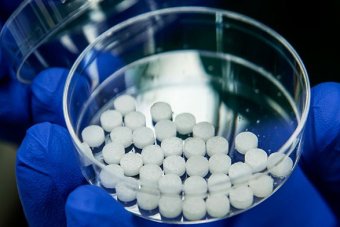Scientists in the US have created a tiny implant which attracts and captures cancer cells spreading through the body.
The study, published in the journal Nature Communications, found that capturing the cells prevents their spread and helps stop cancer progression.
The study’s co-author, Professor Lonnie Shea from the University of Michigan, said the invention could lead to new ways of diagnosing and treating cancer.
“We started with an idea of, could we develop an implant that the cancer cells would go to, and the idea is that the cancer cells are going to the lung, could we make something that could be more attracted to the cancer cells more than the lungs and that way the cells would go there,” she said.
“And you’d also know where to look, you’d have a place that you could specifically scan… and you’d know, ‘Okay there’s no signs of cancerous cells, I’m cancer free’.
In some ways sound like science fiction that you can actually control where the cancer cells are going to go to and actually be able to use that as a initially a diagnostic and that ultimately as a therapeutic.
Professor Lonnie Shea, University of Michigan
“Or if you find something suspicions then you could take it out, you could then analyse it, figure out what’s the best chemotherapy drug for you and then be able to start therapy.”
The implant is made of polylactide-co-glycolide, or PLG, a material that dissolves after a period of time.
“The long-term vision for this is that patients with a high risks for developing cancer could actually get an implant and that implant could essentially be scanned very regularly to look for the earliest signs that cancer is occurring,” Professor Shea said.
“That way you could actually know very early stages when the cancer’s starting, you could then take action immediately.
“At the same time there is this benefit that having the implant actually seems to reduce the extent to which the cancerous cells are present, so it has certainly this early intervention approach to it but also has seems to have some therapeutic opportunities because it does reduce the number of cancer cells.”
Professor Shea said the researchers are hoping to begin human trials in the next six to nine months.
“I think people are really intrigued by this idea,” she said.
“We’ve been doing this work for a while now and we’ve had conversations with people and I think that people’s ears sort of perk up when they talk about this because it does in some ways sound like science fiction that you can actually control where the cancer cells are going to go to and actually be able to use that as a initially a diagnostic and that ultimately as a therapeutic.
“And cancer is such a devastating disease for so many people, everyone can relate to it, and so the opportunity to really tackle this in a new way has really gotten people excited.”

